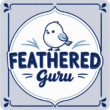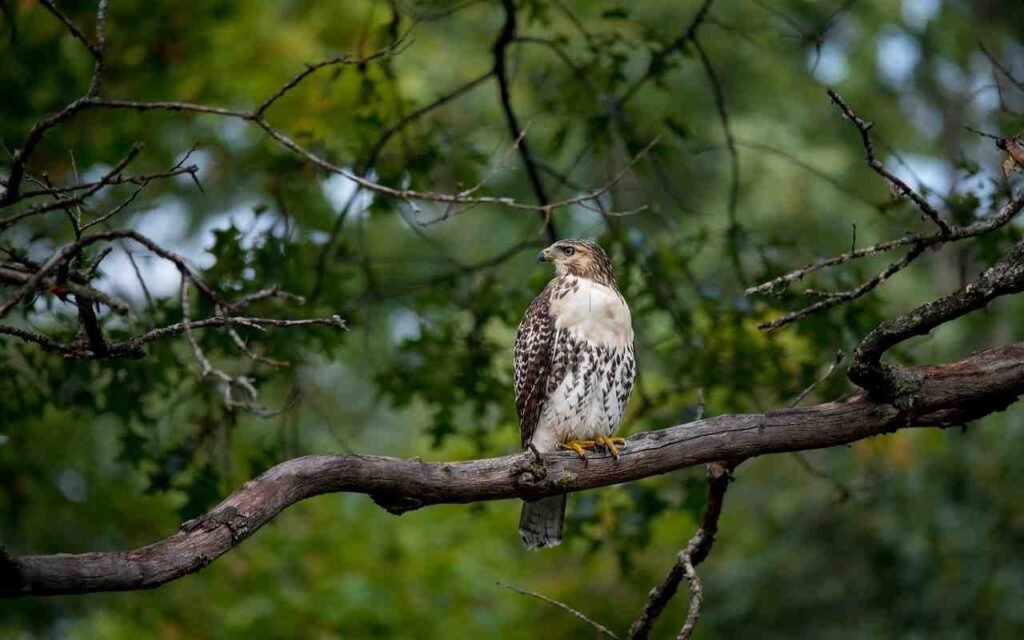Spring has this magical way of making everything feel alive again. Birds suddenly start chirping like they’ve discovered Spotify 🐦, flowers bloom like they’re showing off, and even your neighbor’s dog seems less annoying. If you’re new to birdwatching, spring is hands down the best season to get started. Trust me, I’ve been there, awkwardly squinting at a bush, trying to figure out if that was a cardinal or a very confused red squirrel.
That’s why I put together this guide on essential spring birdwatching tips for beginners. Think of it as your cheat sheet to enjoying spring birdwatching without feeling lost or frustrated. I’ll cover practical tips, insider tricks, and some lessons I learned the hard way (like why wearing bright red might actually scare the birds away). By the end, you’ll feel confident enough to spot, identify, and maybe even photograph some feathered friends.
Start With the Right Gear
You don’t need a top-of-the-line telescope or some gadget that looks like it belongs in NASA headquarters. Seriously. Most beginners make the mistake of thinking expensive gear = instant birding success, and honestly, it’s just not true.
Binoculars Are Your Best Friend
A decent pair of binoculars can make or break your experience. Look for:
- Magnification: 8×42 is perfect for beginners. Anything stronger is overkill and shaky.
- Weight: Heavy binoculars = sore neck. Keep it light.
- Ease of Use: Test them in a store if possible. Comfort matters.
I personally have a mid-range pair that cost less than a fancy dinner, and they’ve never let me down 😎. FYI, practice focusing on birds in your backyard first, your coordination will thank you when a robin decides to dash across your neighbor’s lawn.
Fun anecdote: I remember my first serious birdwatching morning, I tripped over a garden hose while trying to focus on a woodpecker. True story, but I did get a decent look at it, so it counts as a win, right? Another time, I nearly sat on a nest of tiny wrens hidden in a shrub, thankfully, I spotted them just in time. Patience and careful observation save a lot of rookie mistakes.
Notebook or App
Track your sightings. Nothing fancy, just jot down:
- Bird type
- Date
- Location
- Any interesting behavior
I like using a small notebook, but apps like eBird are awesome if you want to log your sightings digitally. Plus, they make you feel official, like a real-life ornithologist.
Extra tip: Include a quick doodle or even color swatches next to each bird. Not only does it help you remember, but it’s fun to look back on your spring birding progress.
Know When and Where to Look
Timing is everything in birdwatching. Spring mornings are gold.
Early Morning Advantage
Most birds are super active right after sunrise. They’re hunting, singing, and generally doing bird stuff. Late morning? They nap or hide, making your spotting chances slimmer.
Pro tip: Grab a thermos of coffee and sit quietly. Not only do you get caffeine, but birds will slowly start coming out, and you’ll feel like you discovered a secret world. I once spent 20 minutes watching a pair of cardinals take turns feeding their fledglings, so serene and oddly motivating.
Pick the Right Spot
- Backyard: Perfect for casual birding.
- Local parks or reserves: More species, more excitement.
- Near water: Ducks, geese, herons, you name it.
Here’s a mini-story: I once spent an entire morning in a local park and ended up spotting a family of bluebirds building a nest. I didn’t even know bluebirds came through my area in spring. Moments like that are why patience pays off.
Extra tip: Sit quietly for at least 10 minutes. Birds are like shy teens; they won’t show up if you’re pacing around like a maniac. Take a notebook and sketch their positions or mark sounds, your brain starts piecing together patterns quickly.
Learn Basic Bird Identification
Before you freak out about memorizing 500 species, take a deep breath. Spring birdwatching is mostly about a few common birds.
Focus on Key Traits
- Color patterns: A red breast? Probably a robin.
- Size and shape: Tiny warbler vs. hefty crow.
- Behavior: Hopping, perching, flying style.
Example: Sparrows often hop on the ground, while finches tend to flutter between tree branches. Noticing these habits makes identification easier. I’ve also learned that watching a bird’s tail movement can clue you in, a subtle flick or wag is often species-specific.
Use Field Guides or Apps
Field guides are classic and satisfying, but apps like Merlin Bird ID are insane. You take a picture or describe the bird, and it tells you what it likely is. Yes, it feels like cheating, but IMO, it’s helpful, especially when your friend asks, “What’s that bird?” and you don’t have to lie.
Fun fact: Birdwatchers who use apps like Merlin can identify birds up to 70% faster than beginners relying solely on guides. Over time, you’ll start noticing patterns and won’t need the app for every sighting.
Attract Birds to Your Yard
Sometimes you don’t feel like chasing birds, they should come to you, right?
Feeders Matter
- Seed types: Black oil sunflower seeds are universal favorites.
- Placement: Near bushes or trees so birds feel safe.
- Cleanliness: Gross feeders = sick birds. Wash them every 2 weeks.
I learned this the hard way. I forgot to clean my feeder for a month, and suddenly I had way more squirrels than birds. Lesson learned. On the bright side, I got great photos of the squirrels, so not all is lost 😉.
Water Sources
Birdbaths, fountains, or shallow dishes work wonders. Spring is still a bit chilly, so make sure water isn’t frozen. Even a small dripper can attract robins and sparrows like magic.
Pro tip: Add a few flat stones to a birdbath 🪨. Birds love perching, and it gives them extra safety from predators like neighborhood cats. I also once noticed that adding a tiny solar-powered fountain dramatically increased visits. Birds love moving water, it’s a mini waterfall show for them.
Listen and Learn
Birdwatching isn’t just visual. Sounds tell a lot about who’s around.
Recognize Calls
- Morning chirps: Usually robins or sparrows.
- “Cheer-up” songs: Often warblers or finches.
I have this habit of mimicking calls, I know, ridiculous, but it actually works sometimes. Birds are curious, and honestly, it’s fun to try. Once, I even got a curious chickadee to come within a few feet of me just by gently mimicking its call.
Use Audio Tools
Apps like Audubon Bird Guide have sound libraries. Practice by ear, and soon you’ll spot birds without even looking. It feels like unlocking a superpower.
Interesting fact: Many beginner birders don’t realize that 50–60% of bird identification can come from sound alone, especially in dense wooded areas. Pairing sound with visual observation speeds up learning dramatically.
Respect the Birds and Their Space
This one is crucial. Beginners often get too excited and scare everything away.
Keep Your Distance
- Stay 10–20 feet away from nests.
- Don’t chase birds around your yard.
Observe, Don’t Disturb
- Avoid loud noises.
- Don’t touch nests or eggs.
Birds are delicate creatures. You’ll enjoy watching them a lot more if they don’t see you as a walking snack or a threat.
Mini-story: I once saw a friend rush toward a nest to get a “better look.” The mother bird flew off, and the babies hid. It was heartbreaking, and now I always remind people: patience > curiosity.
Document Your Adventures
Photography or sketching adds another layer of fun.
Photography Tips
- Use a zoom lens; don’t get too close.
- Avoid flash, it startles birds.
- Be patient. You’ll miss a lot, but the shots you get feel epic.
Pro tip: Even smartphone cameras can work well with patience. I got a decent shot of a cedar waxwing simply by setting the phone on a tripod and waiting 15 minutes.
Sketching
Not into photos? Try drawing. Even quick doodles help you remember patterns, colors, and shapes better than any photo.
Pro tip: Keep a small sketchbook handy during morning walks 🖌️. I once sketched a hummingbird in under five minutes, and later realized it was a rare species migrating through my area. Totally worth the effort.
Join a Community
Birdwatching is way more fun when you share the experience.
Local Bird Clubs
Check if your city or county has birdwatching groups. They organize walks and events. Great for beginners and socializing.
Online Communities
Reddit, Facebook groups, and forums like BirdForum are filled with people who’ll happily answer newbie questions. Plus, seeing others’ sightings motivates you to keep looking.
Interesting stat: Studies show that birders who engage in communities are 30% more likely to stick with the hobby long-term.
Common Beginner Mistakes to Avoid
Let’s be real, we all screw up at first. Here’s what I see most:
- Wearing bright clothes. Birds notice everything. FYI, earth tones are your friend.
- Chasing every sound or movement. Birds hate drama.
- Overfeeding or feeding the wrong seeds. Not every bird eats sunflower seeds.
The good news? Mistakes are part of the learning curve. Just laugh it off and try again next time.
Mini-anecdote: I once spent 20 minutes trying to photograph a cardinal, only to realize my own reflection in the window scared it off. Rookie move.
Bonus Tips for Spring
- Check Migration Patterns: Some birds only pass through during spring. Apps and local reports help track them.
- Keep Your Eyes on the Sky: Hawks and swallows can appear unexpectedly.
- Take Notes on Behavior: Courtship, nest building, feeding, these moments are pure gold for learning.
Fun fact: Spring is peak migration season in North America, meaning some birds may only be around for a few days. Missing them means waiting another year!
Why Birdwatching Is Worth It
Birdwatching isn’t just a hobby, it’s calming, educational, and connects you to nature in a way scrolling Instagram never will. Watching a pair of robins build a nest, spotting a rare warbler, or simply hearing morning chirps can genuinely improve your mood.
Interesting stat: Studies show that people who spend at least 20 minutes outside observing wildlife experience reduced stress and improved mental clarity. Who knew birds could be tiny therapists?
Wrapping It All Up
Spring birdwatching is one of those hobbies that grows on you fast. Start with the basics, invest a little in the right gear, and get used to observing quietly. Remember, it’s about the experience, not checking off species lists.
By following these tips, from picking the right binoculars to attracting birds to your yard, you’ll enjoy a season full of chirps, colors, and tiny moments of awe. And trust me, nothing beats spotting that first robin of the year without it noticing you, then feeling like a nature detective for a whole morning.
Now go grab your binoculars, step outside, and see what spring has in store. And hey, if a squirrel tries to photobomb your birdwatching session, just laugh, it happens to all of us 🙂




